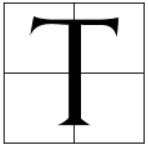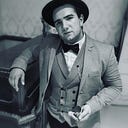Member-only story
Women of the Third Reich
Kinder, Kuche, Kirche (Kids, Kitchen, Church)

 The Ideology created by Hitler which outlined the so-called Nazi ideal of femininity: a sporty woman, with Nordic blonde hair, always cheerful, surrounded by as many children as possible. The traditional Nazi slogan which was used for women was: “Kinder, Kuche, Kirche” (children, kitchen, church) was quickly embraced by women, even though they also claimed, “Krankenhäuser und Kultur” (hospitals and culture).
The Ideology created by Hitler which outlined the so-called Nazi ideal of femininity: a sporty woman, with Nordic blonde hair, always cheerful, surrounded by as many children as possible. The traditional Nazi slogan which was used for women was: “Kinder, Kuche, Kirche” (children, kitchen, church) was quickly embraced by women, even though they also claimed, “Krankenhäuser und Kultur” (hospitals and culture).
Women within the Nazi Party
Even in the early 1920s, says Anna Maria Sigmund in Les femmes du III Reich, women had appeared within the Nazi Party on various occasions. The manifest misogyny of men led them to create their own structures, a kind of movement parallel to that of men. Coquettish and sporty, like Eva Braun, divorced bourgeois, like Magda Goebbels, adventurous aristocrats like Carin, Göring’s first wife, activists and propagandists like Gertrud Scholz, they played, psychologically speaking, an essential role not only in the lives of husbands but also in the establishment of the Third Reich.
Hitler did not ignore this phenomenon at all. He noted that since 1924, a movement of women attracted to politics had appeared unexpectedly.
“These women were the party’s best propagandists. They persuaded their husbands to ally with Hitler, sacrificing their free time for political enthusiasm,” Heinrich Hoffman, the party’s photographer, would write in his memoirs.
Hitler knew how to exploit with refinement the sympathy of his partisans. While street fighting took place outside, during which the party brutally eliminated its opponents, Hitler appeared smiling in the Austrian salons, sharing handshakes and attracting not only sympathy but also important funds for the party.

In 1926, when the NSDAP was in danger and Hitler was about to commit suicide, Elsa Bruckmann, born Princess Cantacuzino and…
